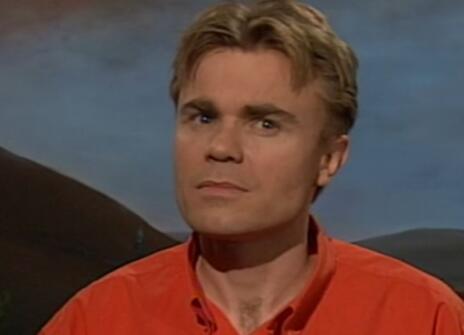Lecture 3 – The quantum leap
From the 1999 Lecture programme:
What is the shortest time-scale that can be measured, and is there any in-built uncertainty which will ultimately limit the accuracy of such a measurement?
Such issues force us to look into the ultrasmall world of atoms, and the seemingly magical properties of 'quantum mechanics'. Indeed it is from these microscopic building blocks that the world's most accurate clocks are now being made.
Two hundred years ago Michael Faraday, who started the Royal Institution Christmas Lectures, was gaining a reputation as the father of electricity. However he was unaware of the microscopic origins of the effects he observed. In fact it was not until one hundred years later that the extraordinary quantum world of electrons and atoms was revealed. In the quantum world, particles are waves, and waves are particles this statement sounds simple, but its consequences are quite revolutionary and are still being debated.
It is the wavelike behaviour of the electrons in semiconductors that ultimately allow us to use semiconductors to create our modern high-tech world based on silicon chips. As a result, we have been able to develop ultra-fast digital communications, desktop computers, mobile phones and CD players. As our increasingly rapid lifestyle demands even faster computers and electronic devices, manufacturers are striving to design ever smaller silicon chips.
However we will soon reach the physical limits of standard chip design. We will then be faced with the daunting prospect of having to harness the stranger properties of quantum mechanics in order to achieve faster information processing.
However instead of halting progress, the quantum world offers us the exciting possibility of exploiting some quite miraculous effects. It is ironic that it is some of these stranger properties of quantum mechanics which Einstein never liked despite the fact that he was awarded the Nobel Prize for his contribution to quantum mechanics!
About the 1999 CHRISTMAS LECTURES
Physicist Neil Johnson looks at the concept of time in these CHRISTMAS LECTURES from 1999.
From the 1999 Lecture brochure:
What is time? Can we make it go backwards? Will it ever end – if so, how and when?
In our daily lives, we often find ourselves battling against time: we may blame it for slipping by too quickly, but are unable to stop it. On other occasions, such as during the Millennium celebrations, we happily celebrate its passing. Yet what would we do without it? There would be no way of running our everyday world: no night, no day, no Christmas, and no Christmas Lectures!
Phrases such as 'time is money', 'against the clock' and 'no time to lose' are typical of our love-hate relationship with time's steady march forwards. But why forwards? And how steady? These are very difficult, yet fundamental, questions that scientists are still trying to answer.
From a mathematical point of view, time is just another 'dimension' like space. However, it is a very mysterious and fascinating one. Our world seems to depend fundamentally on the fact that time moves forwards, not backwards. Although we travel around freely in space, time travel still lies beyond us.
What is the time? That question seems like it should be much easier to answer. After all, you just need to glance at your watch. But what if you had no watch, how would you go about measuring time?
It turns out that much of our own history is intertwined with this quest. As we have refined our understanding of how to measure time, we have become aware of the crucial role it plays in our world. Early clocks such as sundials relied on the motion of the heavenly bodies. Then came mechanical devices based on the periodic motion of a swinging pendulum.
More recently, we have turned to the ultra-small quantum world to devise atomic clocks which enable us to synchronise events in different places with amazing accuracy. The reliability of modern-day navigation, commerce, telecommunications and manufacturing depends heavily on such synchronisation.
Interestingly, however, there are many phenomena in our everyday world that can not be described using a regular time-scale. Traffic jams, stock market crashes, and earthquakes all seem to arise in an irregular, almost chaotic way. Does this mean we can never predict when they will occur?
These Lectures take us on a journey through time. We will travel from the vast time-scales of the Universe bounded by the intricate fabric of space-time itself, through our rapidly changing everyday world to the ultimate limits of the unbelievably small quantum world upon which all of life ultimately depends.
Our journey touches the outer limits of the current scientific understanding of the role of time in our world. This understanding has changed dramatically since the founding of the Royal Institution two hundred years ago. As for the surprises which await us in the future, only time will tell!
However, there are many recent scientific discoveries that provide exciting glimpses as to what may lie ahead, such as teleportation, the possibilities for time travel and the fate of the Universe itself.




